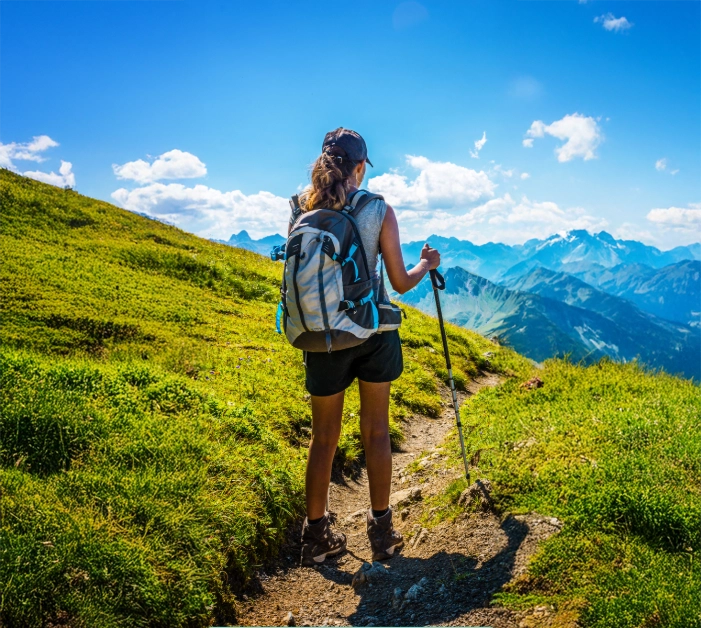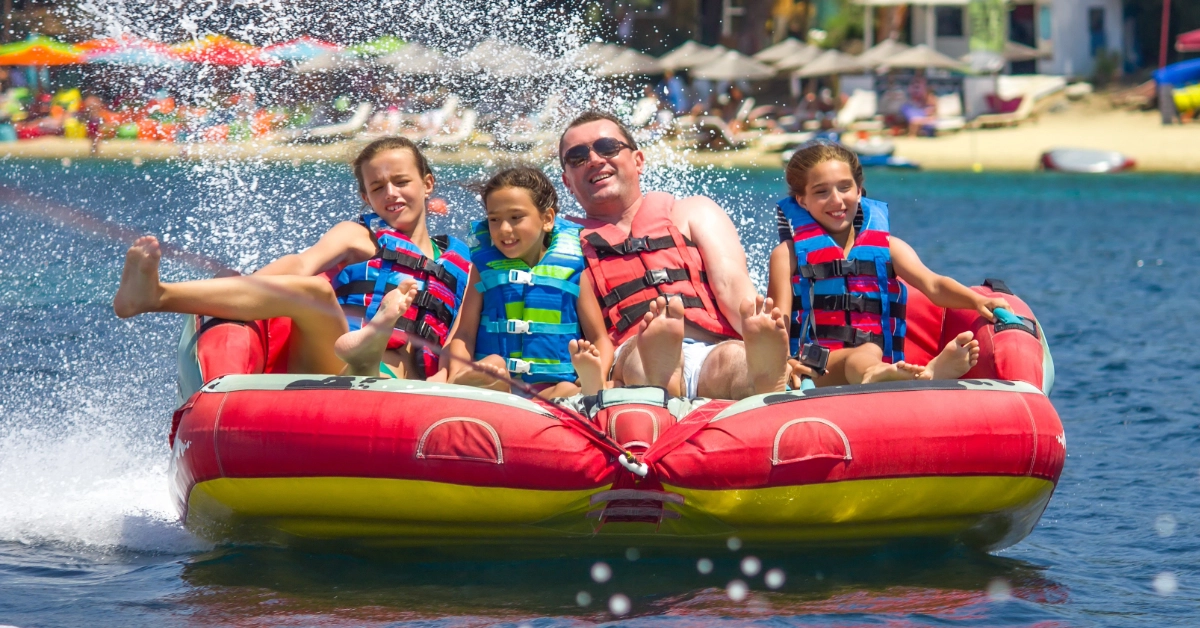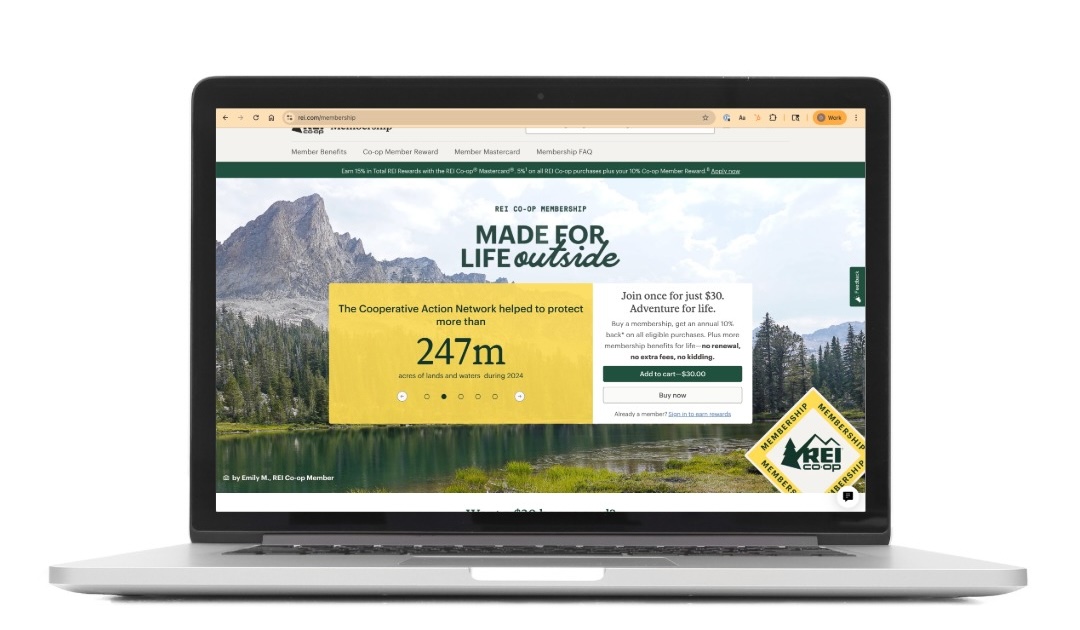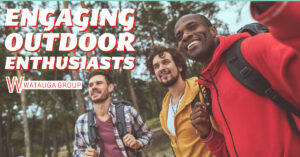Based on the findings from Watauga’s research report, “Surveying the Outdoors: the 2024 Customer Growth Report,” we continue to explore the three different types of outdoor recreation participants.
The report provides critical information for outdoor brand marketing leaders across several verticals, including camping, fishing, hunting, biking, watersports, RVs, and other products. The data from the report were derived from an extensive consumer attitudinal research study involving 1,578 participants — it dives deep into the minds of outdoor participants.
Using insights from the report, outdoor brand marketers can understand their consumers and build comprehensive outdoor recreation marketing strategies. The goal is to engage these audiences, grow brand recognition, and increase sales.

Understanding Participant Mindsets and Customer Lenses
Our research study unveiled four distinct mindsets of outdoor participants:
Adventurous participants who embrace challenge with passion.
Practical participants who are methodical and budget-friendly.
Aspiring participants who seek tranquility amid life’s chaos.
Conventional participants who prefer familiarity and fear the unknown.
Watauga also applied three separate customer lenses named “Seekers”, “Doers,”, and “Lovers” to closely analyze the research data:
Seekers are individuals who have not participated in outdoor activities but express interest in doing so.
Doers are those who enjoy the outdoors and are casual participants in one or more outdoor activity.
Lovers are avid enthusiasts and participants in at least one outdoor activity.
Outdoor Seekers, Doers, and Lovers: Understand Your Audience
The outdoor recreation market is as diverse as the landscapes it promotes — it requires a data-driven approach among marketing teams. Outdoor brands and destinations that tailor their marketing efforts to specific consumer motivations will stand out within the space.
The motivation driving each of these audiences to act on their desires to participate in outdoor activities is different — and that matters. These motivations include relaxation and stress relief, affordable activities to do for themselves or with family, and the thrill of new adventures.
While each group has unique behaviors and purchasing drivers, they all share common themes that can inform a holistic marketing strategy. By aligning messaging, promotions, and engagement tactics with these outdoor consumer insights, marketers can create compelling campaigns that inspire action.
Seekers: Motivated by Relaxation and Accessibility
Insights drawn from the research report show that Seekers are drawn to outdoor recreation primarily for stress relief, improved physical health, and relaxation. With more than half of Seekers across all mindsets citing relaxation as their primary motivation to try a new activity, it is a powerful focal point for marketing strategies.
To maximize engagement with new participants and first-time customers, brands should highlight the core benefits that Seekers value the most. This strategy means relaxation should serve as a foundation for messaging across Seeker mindsets, helping to create compelling marketing campaigns.

Some ways to communicate the wellness benefits of getting outdoors include:
- Leveraging influencer marketing for outdoors brands: Partnering with health, fitness, or wellness influencers can lend credibility to marketing efforts, as their endorsements highlight the mental and physical health benefits of outdoor activities. Seekers are more likely to turn into participants when they see social proof. Leverage user-generated content on social media and websites, showcasing real stories and experiences that make outdoor recreation feel accessible.
- Hosting wellness events: Organizing or sponsoring wellness events and challenges tailored to Seekers can create immersive experiences that reinforce these benefits. Learn more here: How To Use Wellness to Fuel Outdoor Brand Marketing Strategies.
- Engaging outdoor audiences through seasonality: Seasonality also plays a role in engaging non-active Seekers. Capitalizing on periods when health and wellness content is top of mind — such as New Year’s resolutions — can significantly boost engagement. By aligning marketing strategies with these seasonal trends, brands can capture the attention of Seekers when they are most motivated to take action.
Understanding what makes Seekers want to try new outdoor activities is key to converting them into long-term participants. Whether through targeted messaging, influencer partnerships, strategic event sponsorships, or seasonal trends, brands can successfully take advantage of the Seeker mindset and inspire them to embrace outdoor recreation as part of their lifestyle.
Doers: Budget–Conscious and Looking for Value
For Doers, quality and customer service are the most influential factors when choosing an outdoor brand, but price sensitivity plays a key role — especially for those with a Practical mindset. While they value strong products and reliable service, Doers are significantly more likely than Lovers to be swayed by coupons and discounts.
In fact, 60% of Doers say they are open to trying a new outdoor activity if it fits within their budget, with affordability being even more critical for Practical Doers, 67% of whom cite cost as the deciding factor.
To convert Doers into loyal customers, brands should strategically use discounts and incentives to not only drive initial purchases but also encourage repeat engagement. Data also shows that Doers engage through nostalgia, as these individuals often have experiences rooted in childhood memories, family traditions, or one-time adventures.

Here are examples of some marketing strategies that resonate with Doers:
- Rewards program: A well-executed rewards program can be a game-changer, giving Doers a reason to return while fostering brand loyalty. Offering exclusive member benefits, points-based incentives, or early access to deals ensures they see ongoing value in their relationship with the brand. Using first-party data, marketers can personalize these offers to align with purchase history and outdoor interests, strengthening customer connections.
- FOMO-driven discounts: Limited-time promotions, exclusive in-store events, and targeted online deals create a sense of urgency that resonates with budget-conscious Doers. Combining strong messaging with a multi-channel approach – including email, SMS, and social media – maximizes the impact of these promotions, ensuring they reach the right audience at the right time.
- Social media engagement: By incentivizing participation — whether through content sharing, posting reviews, or completing surveys — brands can turn Doers into active community members while expanding their reach organically. These engagement strategies not only increase visibility but also reinforce brand trust, making it more likely that Doers will choose the same brand for their next outdoor purchase.
Lovers: Adventure-Seekers Ready for New Experiences
We know from the report that Lovers thrive on new experiences, always seeking the next adventure that will challenge and excite them. More than half of all Lovers have tried a new outdoor activity in the past year, a number that climbs even higher for Adventurous Lovers, with two out of three engaging in fresh experiences. This mindset makes them an ideal audience for brands looking to promote novel outdoor activities, gear, and experiences.

By leveraging data-driven insights, marketers can precisely target Lovers based on their interests, ensuring messaging, media placement, and promotions align with their appetite for exploration. A few media strategies can be taken from the report and used in building effective marketing strategies targeted at the Lovers mindset:
- Data-driven insights: To effectively engage Lovers, outdoor brands should use syndicated research to identify cross-category opportunities, connecting with those who are naturally inclined to try new activities. Understanding their behaviors allows marketers to expand reach beyond a single sport or pursuit, introducing Lovers to complementary outdoor experiences. This approach not only broadens the potential customer base but also enhances engagement by aligning with activities they are already drawn to.
- Events and partnerships: Building long-term loyalty among Lovers requires active participation in the communities and spaces they frequent. Brands can strengthen connections by engaging in relevant events, sponsoring digital content, and partnering with influencers who share the same passion for adventure. Aligning with publications, organizations, and online platforms that reflect Lovers’ values ensures a consistent presence in their journey toward new experiences.
- Thrill of new experiences: Messaging for Lovers should center on the thrill and personal rewards of stepping into the unknown. They are 38% more likely than Doers to say they enjoy trying new outdoor activities, making it essential for brands to showcase the excitement, challenge, and sense of accomplishment that comes with exploration. By weaving this narrative into traditional media, digital campaigns, and community interactions, brands can inspire Lovers to keep pushing boundaries while fostering an ongoing relationship that drives repeat engagement.
A Unified Marketing Approach
A successful outdoor recreation marketing strategy recognizes that while Seekers, Doers, and Lovers have distinct motivations and behaviors, common themes unite them.
Relaxation and stress relief consistently rank as top benefits across all three groups, making them powerful for messaging content. Additionally, digital engagement — through social media, email marketing, and influencer partnerships — plays a critical role in reaching and converting these audiences. Personalization further enhances effectiveness, ensuring that marketing efforts resonate with each mindset and drive meaningful action.
An Integrated Outdoor Brand Marketing Funnel
An integrated marketing funnel guides each audience from awareness to long-term brand loyalty. While the motivations for each mindset vary, incorporating the following throughout the buying cycle can ensure an effective campaign. Know who you’re speaking to and craft messaging accordingly.
Consider the following:
- Awareness: For Seekers, awareness begins with messaging that highlights stress relief and relaxation, reinforced by influencer partnerships that lend credibility. Doers, who are driven by value and affordability, respond best to messaging that emphasizes cost-effectiveness and quality. Meanwhile, Lovers crave the thrill of new experiences, making excitement and adventure the focal points of brand storytelling.
- Consideration: As Seekers move into the consideration phase, brands should provide beginner-friendly, accessible options that remove barriers to entry. Doers, highly motivated by discounts and incentives, are most likely to take action when special offers align with their budget-conscious mindset. For Lovers, urgency is key — highlight limited-time experiences and exclusive opportunities to create excitement and prompt immediate participation.
- Conversion & Loyalty: To convert these audiences into loyal customers, brands must deliver ongoing value. Seekers benefit from wellness-focused campaigns that encourage first-time participation and provide a clear path toward regular engagement. Doers, who prioritize affordability and reliability, are best retained through loyalty programs and membership perks that reward repeat purchases. Lovers thrive in communities that celebrate adventure, making long-term engagement through events, partnerships, and digital storytelling essential for cultivating their brand loyalty.
Real-World Examples of Outdoor Brands
Several successful brands have implemented some of these outdoor recreation marketing strategies into their campaigns. Looking at some of these brands to uncover marketing tactics that will resonate with your audience.

- REI offers a lifetime membership for $30, providing members with benefits such as 10% back on eligible purchases, exclusive deals, and discounts on services like bike and snow shop services. This program encourages repeat business by rewarding loyal customers, aligning with strategies that emphasize customer retention through loyalty programs.
- Patagonia has built a reputation for its disruptive marketing strategies by focusing on storytelling that resonates with outdoor enthusiasts. By highlighting environmental activism and the personal stories of adventurers, Patagonia connects deeply with its audience, fostering brand loyalty and community engagement.
Building Lifelong Outdoor Brand Loyalty
By understanding the distinct motivations of Seekers, Doers, and Lovers, outdoor brands can craft marketing strategies that cater to each group’s desires while leveraging common themes that unite them. There are overlapping characteristics of all outdoor enthusiasts. However, what drives them to seek opportunities and book trips differs from one group to the next.
Relaxation, affordability, and adventure all serve as powerful motivators, and an integrated marketing funnel ensures that brands engage with consumers at every stage — from initial awareness to long-term loyalty. However, you must also tailor messaging, moving away from a one-size-fits-all approach.
By implementing data-driven insights, personalizing messaging, and utilizing digital engagement strategies, marketers can inspire new participants, strengthen customer relationships, and drive sustainable brand growth in the outdoor recreation industry. With a thoughtful and targeted approach, brands can attract new customers and foster lifelong outdoor enthusiasts who turn to them for their next great experience.






